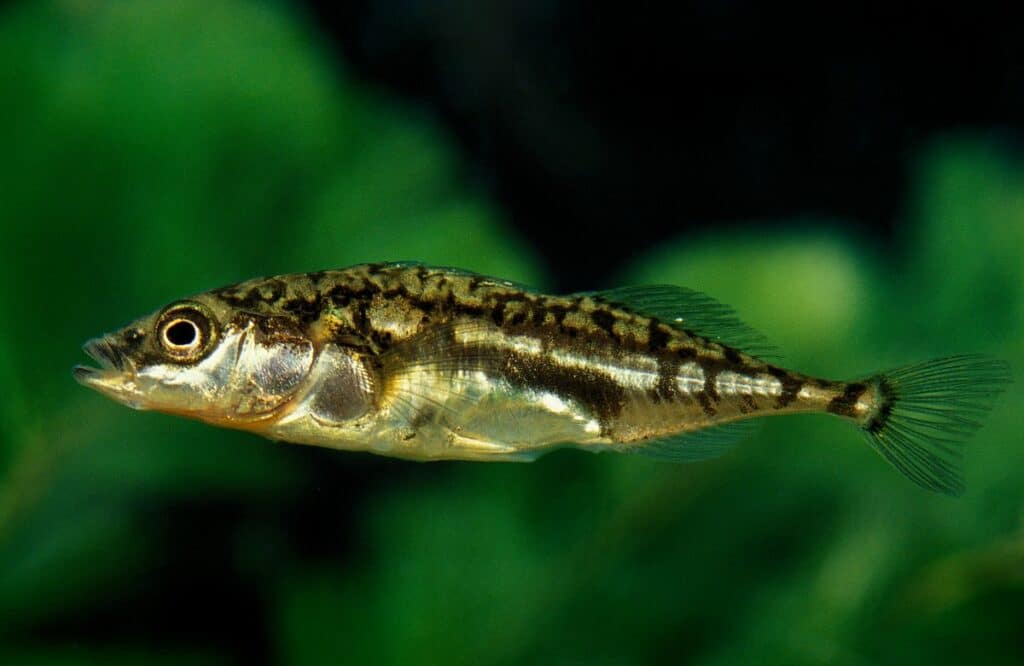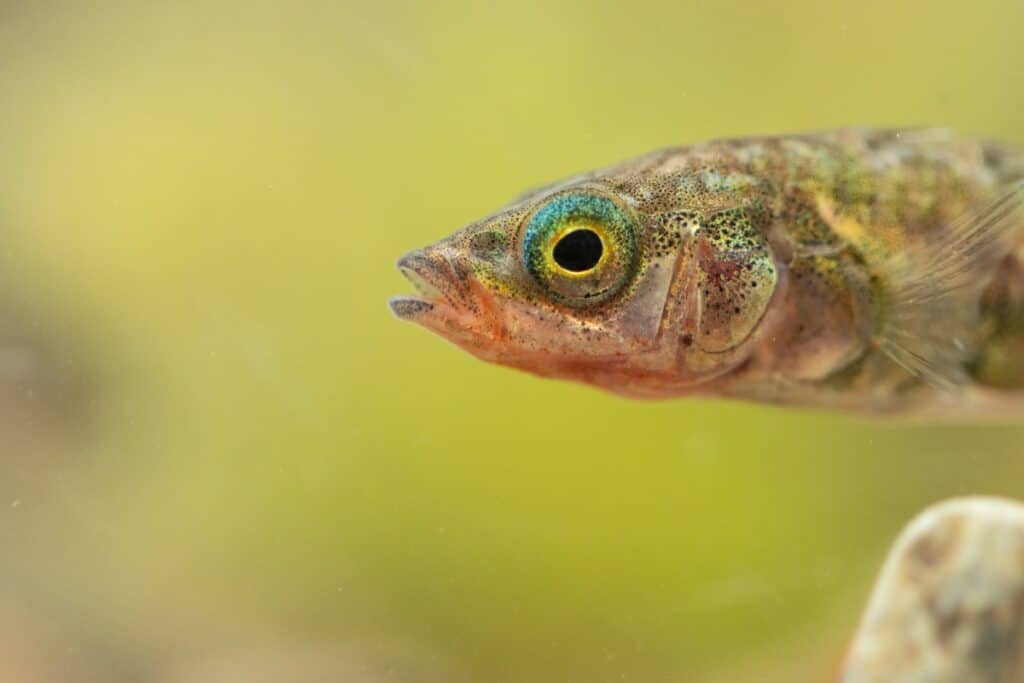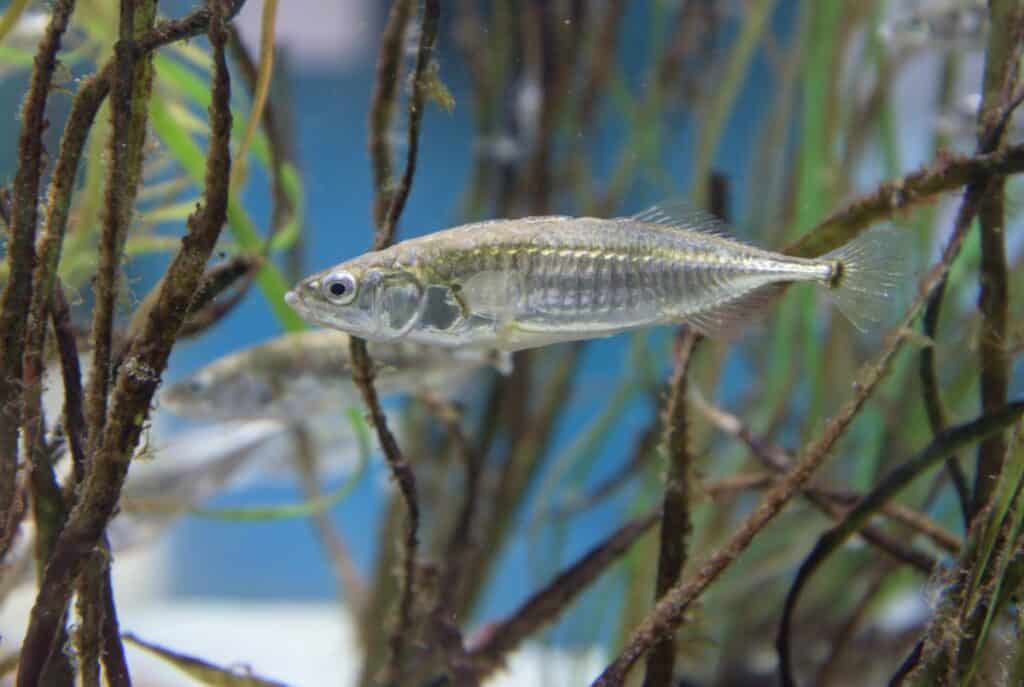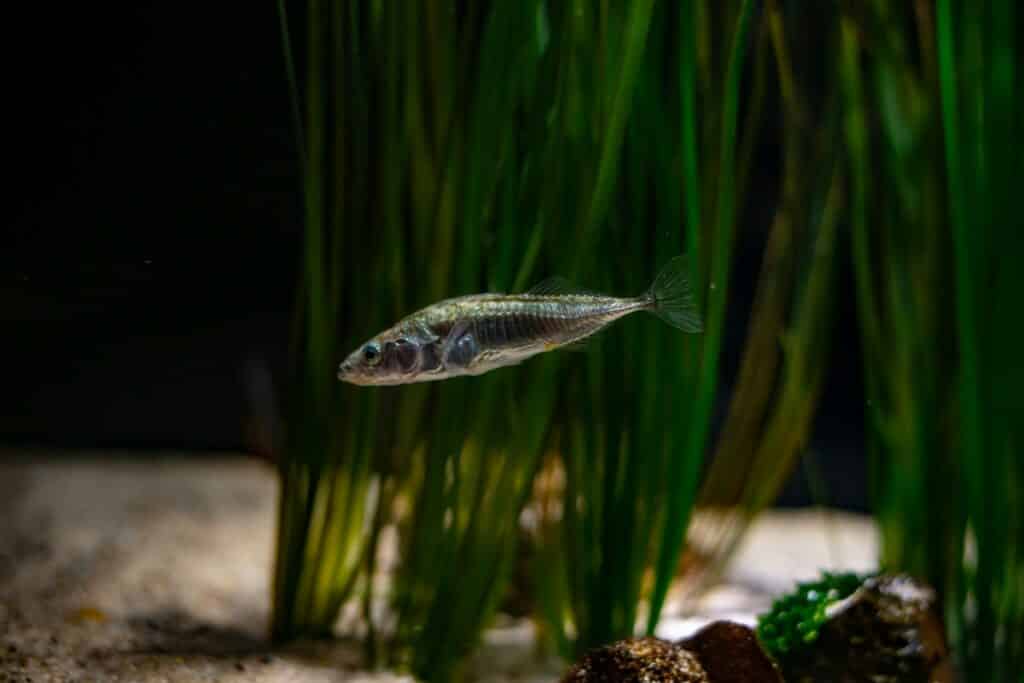the essentials in brief
Sticklebacks are a family of small fish found throughout most of the northern hemisphere. They have a series of spikes on their backs that they can use for defense. Read more here...
There are several species of stickleback, differing in the number of spines, size, and habitat. The best known are the three-spined stickleback, the nine-spined stickleback and the sea stickleback. Read more here...
Yes, you can keep sticklebacks in the aquarium if you observe a few conditions. Sticklebacks need a lot of space, clean water, plants and hiding places. You also need to cater to their special needs during the breeding season. Read more here...
Sticklebacks are fascinating fish that can live in both fresh and salt water. They have an exciting way of life and show a pronounced brood care behavior. If you are interested in these fish and would like to keep them in your aquarium, you should find out how you can offer them optimal conditions. In this blog post you will learn everything you need to know about sticklebacks.
What types of stickleback are there?

There are about 16 stickleback species worldwide, varying in size, colour, number of spines and habitat. Most species come in the northern hemisphere, especially in Europe, Asia and North America. The most well-known species are
Tip: If you want to catch sticklebacks from nature, you should comply with the legal regulations. In Germany you need a permit for this and you have to treat the fish in an appropriate manner.
The three-spined stickleback (Gasterosteus aculeatus): It has three spines on its back and one on each pelvic fin. It grows 5 to 8 centimeters long and is silvery with a greenish tinge. It lives in both marine and freshwater and migrates to spawning grounds in rivers and lakes in spring. In Germany it is the most common species.
The nine-spined stickleback (Pungitius pungitius): It has nine to eleven spines on its back and one on each ventral fin. It is 4 to 6 centimeters long and is brownish with dark spots. It lives mainly in fresh water, in lakes or slow-flowing rivers with lots of plants. It is somewhat rarer than the three-spined stickleback.
Tip: If you want to keep different stickleback species in your aquarium, you should make sure that they have similar water quality requirements. You should also offer all fish enough space and hiding places so that they do not disturb or fight each other.
The stickleback (Spinachia spinachia): It has 15 to 16 spines on its back and none on its pelvic fins. It grows up to 20 centimeters long and is greenish with red spots. It only lives in the sea on rocky coasts or in seagrass meadows. It is the largest species of stickleback.
How do you set up an aquarium for sticklebacks?

While sticklebacks are not very demanding when it comes to water quality, they still need some conditions to thrive. This includes
A sufficiently large aquarium: Sticklebacks are very active and need a lot of swimming space. They are also territorial builders and need distance from other fish. For a small group of three-spined or nine-spined sticklebacks, the aquarium should hold at least 80 liters. For sticklebacks it should be at least 200 liters.
Suitable substrate: Sticklebacks build their nests from plant material they pick up from the ground. Therefore, the substrate should consist of fine gravel or sand that is not too sharp-edged. In addition, it should not be too bright so that the animals do not feel stressed.
Note: If you want to socialize sticklebacks with other fish in your aquarium, you should make sure that they have similar needs and behaviors. Sticklebacks can coexist with peaceful and hardy fish such as bitterlings, minnows, or mustache.
Good planting: Sticklebacks need a lot of plants in the aquarium to hide, spawn and to define their territory. The plants should be robust and fast-growing, as they are often nibbled at or torn out by the fish. Suitable plants are, for example, hornwort, waterweed or java moss.
Moderate lighting: Sticklebacks don't like too bright a light as it will fade their colors and make them nervous. The lighting should therefore not be too strong and only be switched on for a few hours a day. A natural daylight simulation is ideal.
Appropriate temperature: Sticklebacks are cold-water fish and do not tolerate high temperatures. The water temperature should be between 10 and 18 degrees Celsius, depending on the species and the season. In winter the temperature can be a little lower, in summer a little higher.
Good water quality: While relatively tolerant, sticklebacks need clean water to remain healthy. The water should be changed and filtered regularly. The pH should be between 6 and 8, the total hardness between 5 and 15 degrees dH.
Note: When keeping sticklebacks from sea or brackish water, the water must be salted accordingly. Depending on the type and origin of the fish, the salinity should be between 5 and 15 parts per thousand. You can use special sea salt for aquariums for this.
How do I care for sticklebacks in the aquarium?
Sticklebacks are relatively easy to care for if given the right conditions. The most important maintenance measures are
Feeding: Sticklebacks are omnivores, eating both plant and animal food. They like to eat live food such as mosquito larvae, water fleas or Tubifex. However, they can also be fed with frozen or flake food. Feeding should be varied and contain only as much as the fish can eat in a few minutes.
Water change: To maintain the water quality, the water should be changed regularly. A partial water change of about 20 to 30 percent should be done about once a week. The new water should have the same temperature and values as the old water.
Cleaning: The aquarium should be kept clean to avoid algae growth and pollutants. This includes vacuuming the substrate, removing dead plants or uneaten food and cleaning the panes.
How do I care for sticklebacks during the breeding season?

Sticklebacks are very reproductive and show impressive brood care behavior. The breeding season begins in spring when water temperatures rise. Then the Pisces changes both externally and internally.
The males become more colorful and get a red belly and a blue back. They look for a suitable territory and build a nest out of plant material, which they hold together with a sticky secretion. Then they attract the females by dancing and vibrating in front of the nest.
The females become fatter and develop a green belly. They select a male, which they follow and swim to the nest. There they lay their eggs, which are fertilized by the male. The female then leaves the nest and looks for another male. A female can spawn several times, a male can attract several females.
The male guards the nest and eggs. It fans the eggs with its fins for oxygen, removes debris or dead eggs, and defends the nest from predators or competitors. After about a week, the young hatch and initially remain in the nest. The male guards them until they become independent.
The breeding season is very stressful and dangerous for the stickleback. They hardly eat, lose weight and are constantly on the alert. Many sticklebacks die after the mating season or are eaten by predators.
Sticklebacks are fascinating fish for your aquarium
Sticklebacks are fascinating fish that you can have a lot of fun with. They have an exciting way of life and show a pronounced brood care behavior. If you are interested in these fish and would like to keep them in your aquarium, you should find out how you can offer them optimal conditions. In this blog post you have learned everything you need to know about sticklebacks. We hope that you enjoyed this article and that you will soon decide to have sticklebacks in your aquarium.



